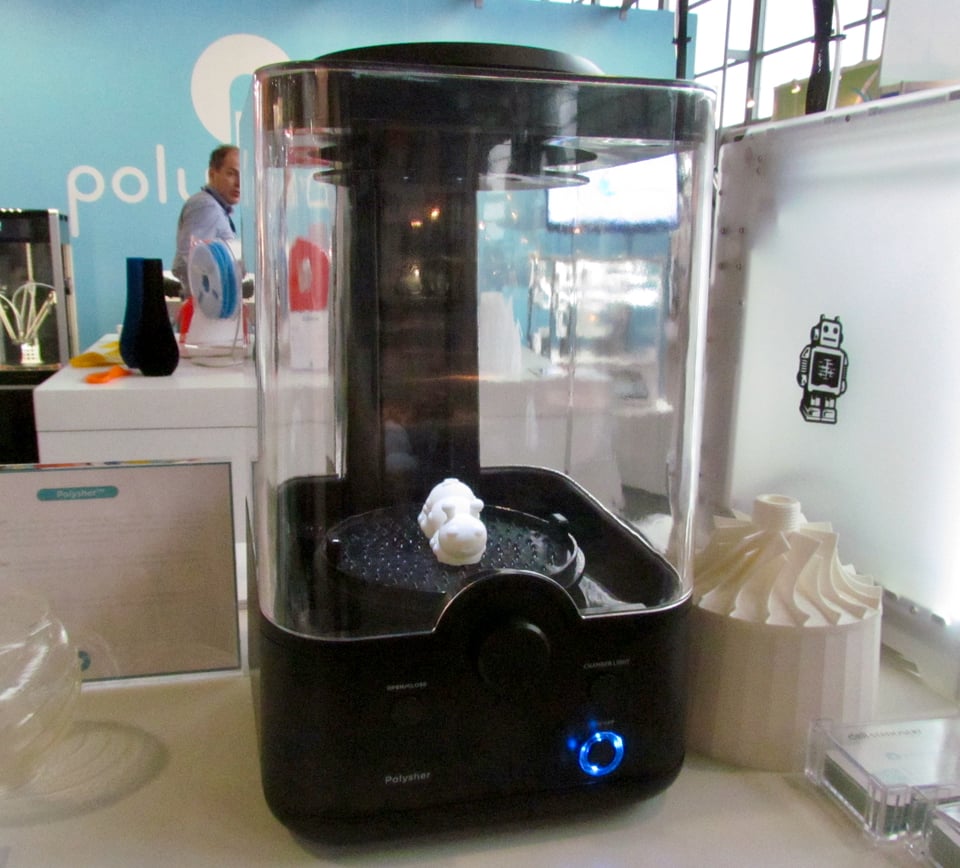
I was able to take a close look at Polymaker’s new smoothing system and found it to be very impressive.
The system is actually a combination of hardware and materials. First, you 3D print your object on any suitable desktop filament-powered 3D printer using Polymaker’s new PolySmooth filament. It prints in a manner very similar to PLA, so it’s quite easy to use.
The second step involves placing the printed PolySmooth object in a device, the PolySher (pronounced “polisher”). This machine will swiftly smooth the object to a glossy finish.
How does it work? The secret is in the material. It’s made of a substance that softens in the presence of isopropyl alcohol (IPA), a very common substance you can find literally anywhere.
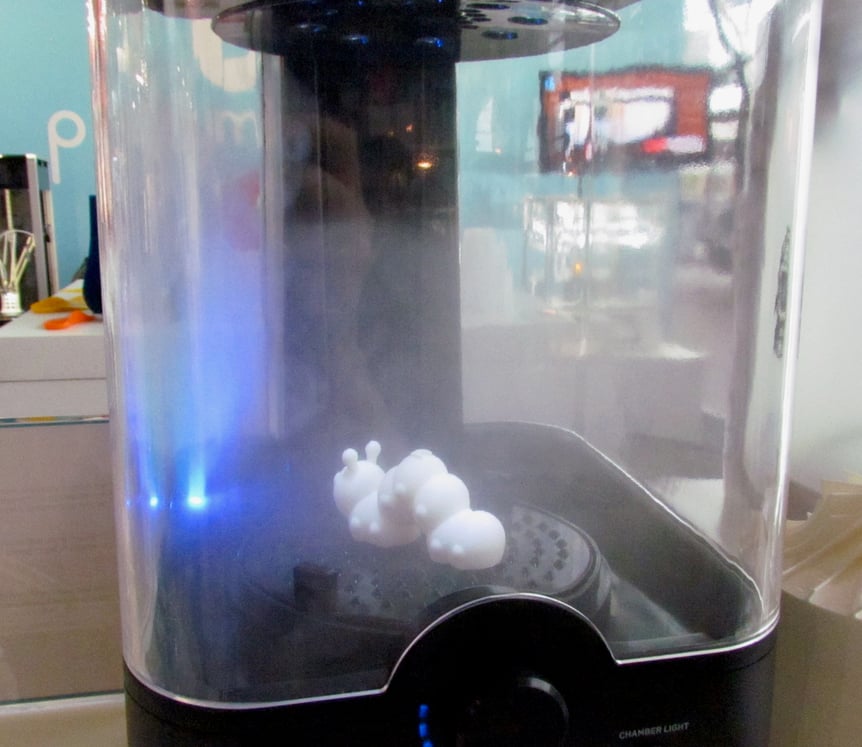
The PolySher is a device that produces a contained aerosol of IPA using a “nebulizer”. This is an electronically powered membrane that literally vibrates molecules of IPA into the PolySher chamber.
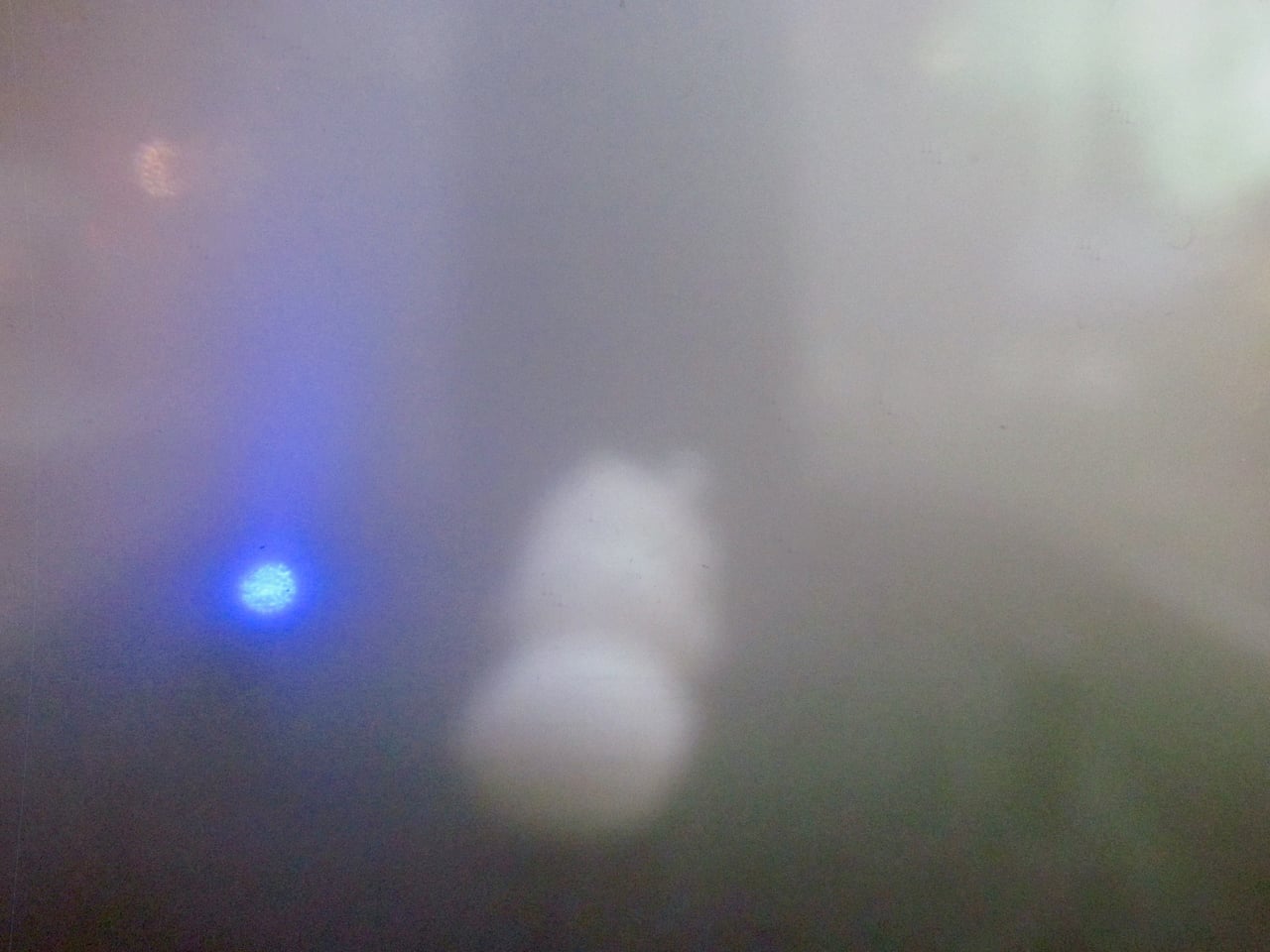
As you can see, this aerosol is quite thick. You wouldn’t want to be breathing this stuff.

After several minutes – which varies depending on how much smoothing you require and the size of the object – the aerosol is condensed for re-use and it’s safe to open the PolySher to remove the object.
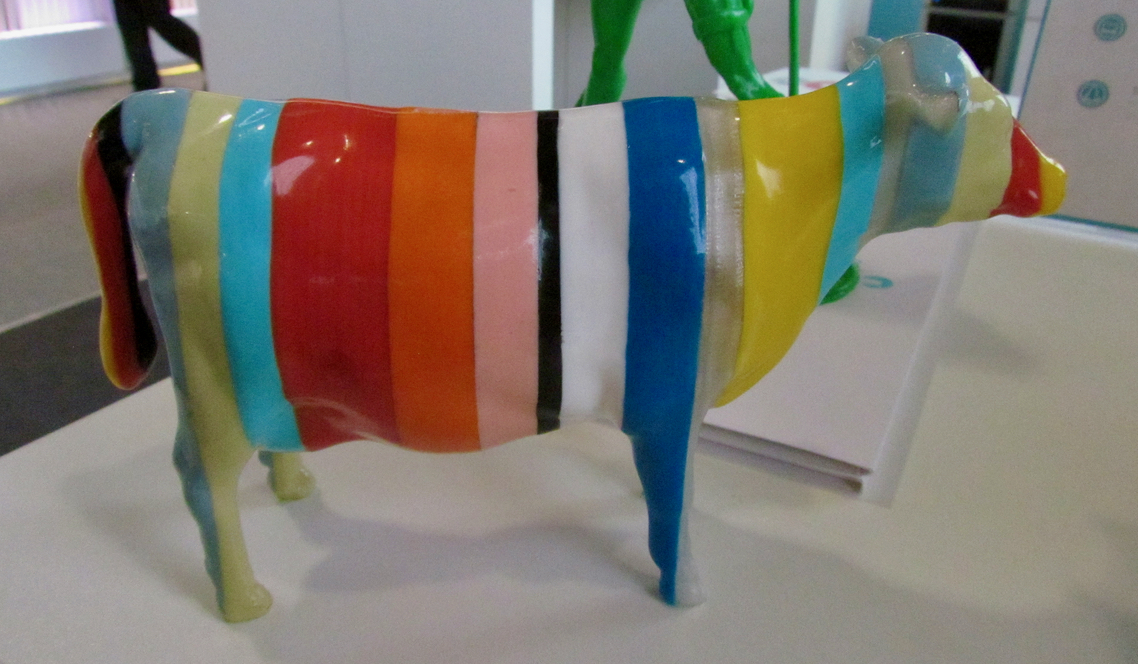
Polysmooth filament is available in multiple colors, but also more importantly in clear filament. Now I know what you’re thinking at this point: “clear” filament is never actually clear when 3D printing. It usually comes out in a translucent form that is optically useless.
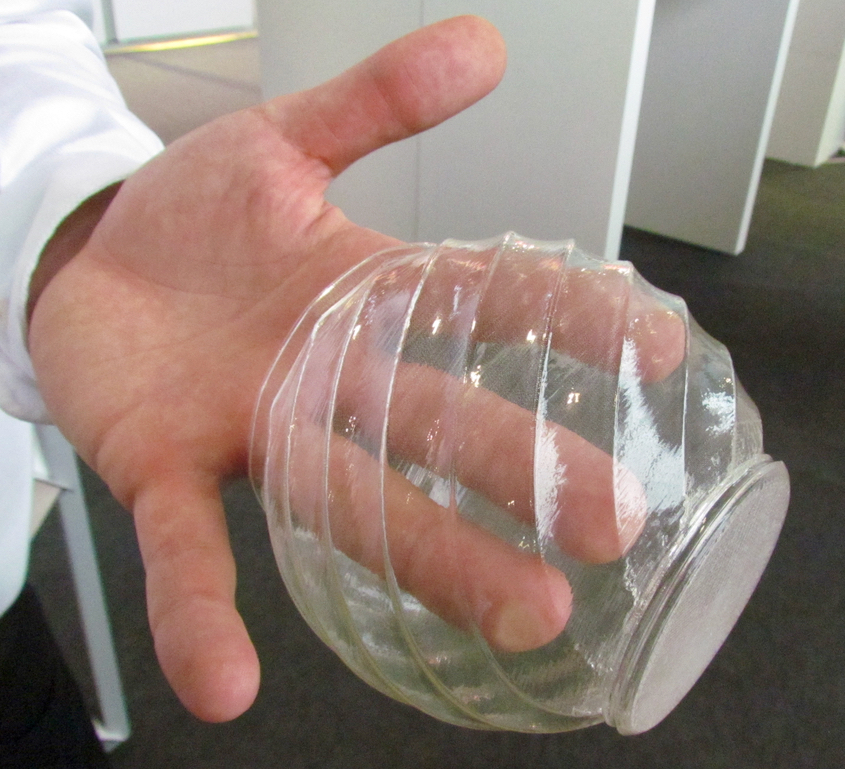
In fact, the only time I’ve seen a properly “clear” 3D printed object was from an expensive Stratasys Connex machine where the print was post processed with a lot of polishing.
However, it turns out the Polymaker smoothing system can approach the same results with their clear filament. Here you can see the results. It’s not going to be able to produce optically correct lenses, but you can get reasonably clear objects, if they are thin-walled.
This is a better solution than using the acetone technique in several ways, not the least being it’s much safer. I just can’t get the idea of having a heater producing acetone vapor in my workshop. That’s an explosive situation.
The acetone technique work only ABS plastic as well, which is often difficult to 3D print.
However, there are a couple of challenges to Polymaker’s solution, too. First, it’s available only from Polymaker, where pricing can be set by them. Secondly, your project might require a material with particular engineering properties, and if they aren’t present in Polysmooth, you’re out of luck.
But for many people printing simple prototypes or artwork, the ability to easily and safely smooth a 3D print is invaluable.
Polymaker recently closed a crowdfunding launch where they gathered almost USD$500K in orders for the USD$250 device. They’re about begin taking orders from the public for this system, and anyone interested in smoothing their prints should take a look.
Via Polymaker

